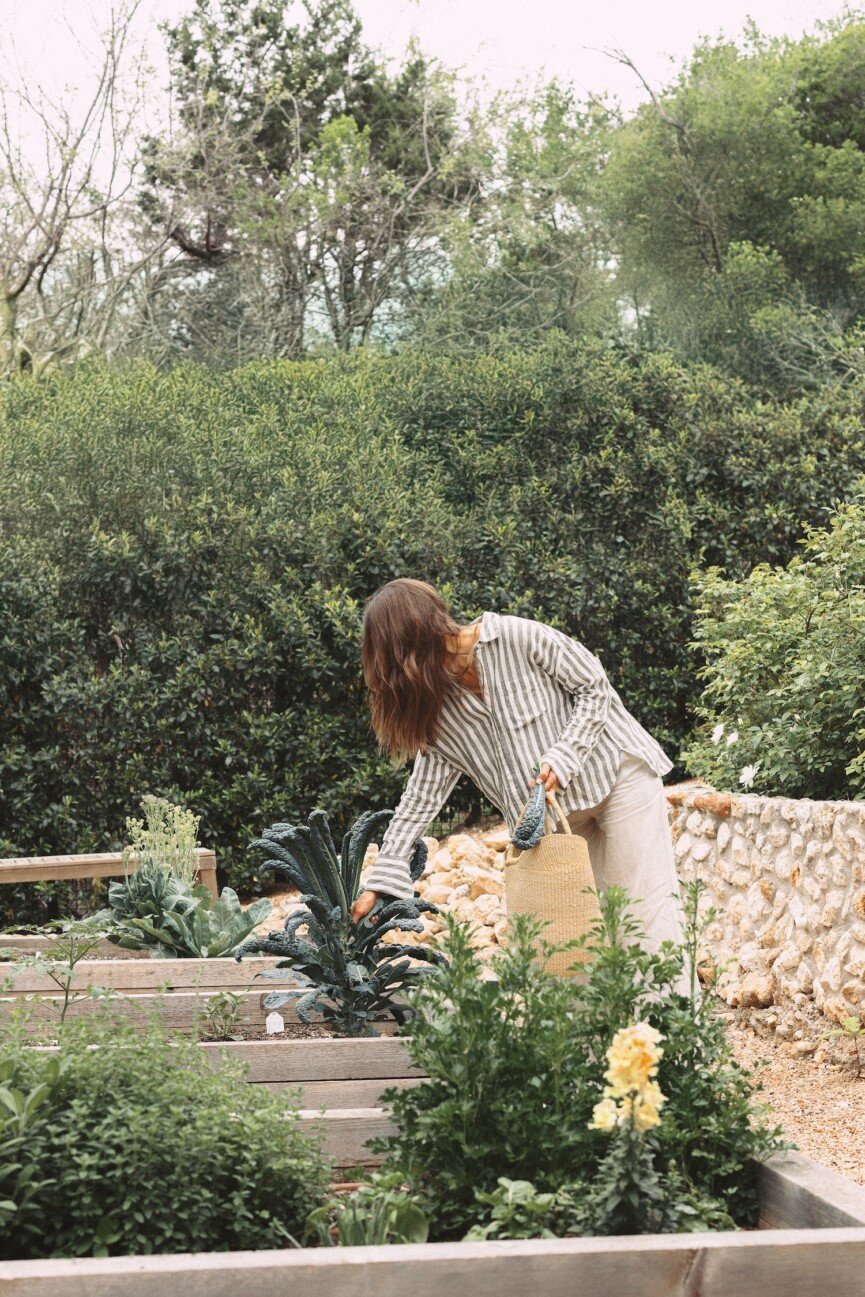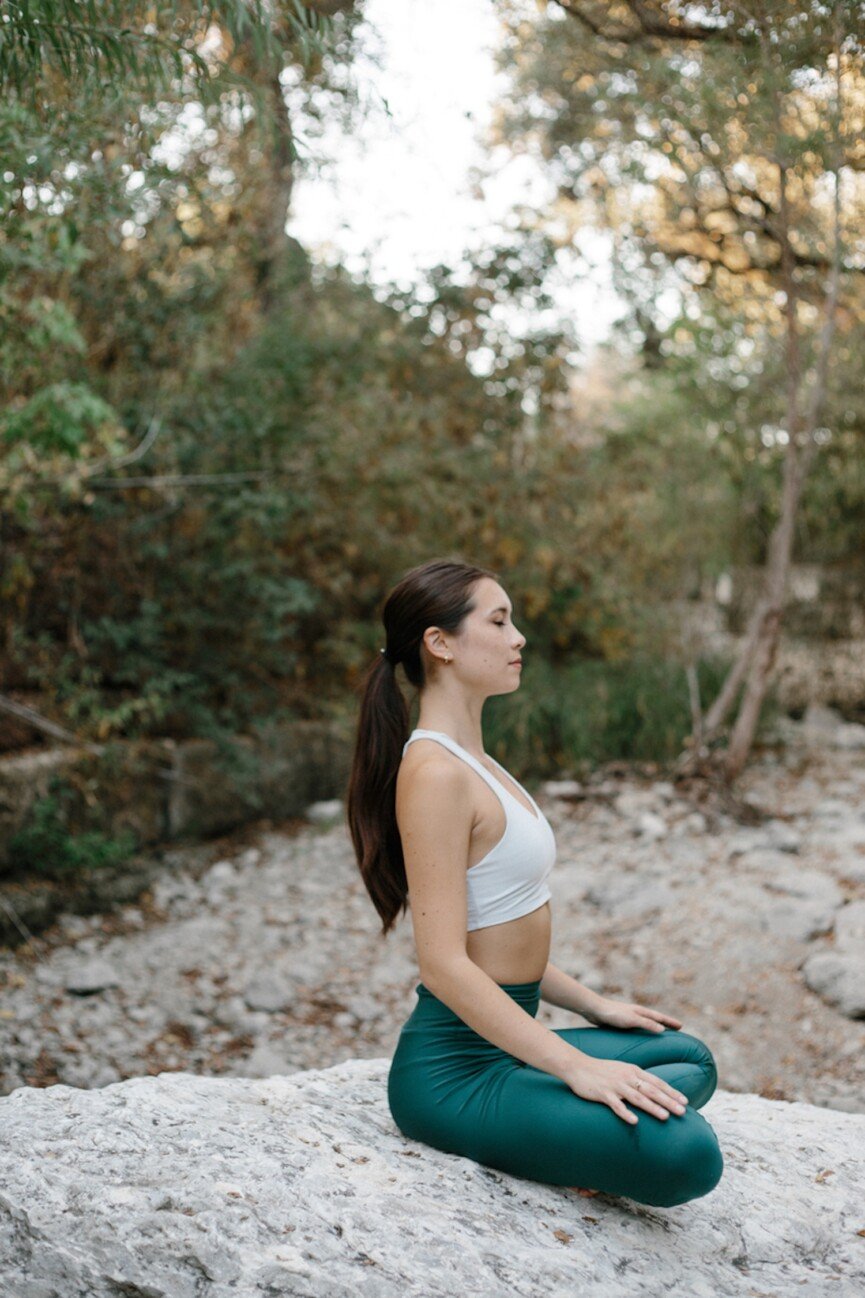Growing up in sunny Florida, I was always barefoot. Whether it was a day at the beach with my family, running around the soccer fields on campus, or just exploring the backyard, I found endless opportunities for dirty feet and scraped toes. Being shoeless felt natural—it was a way of life.
However, a lot changed when I came to Texas for college. I found myself in the concrete jungle of Austin with little time to explore off-campus. I vividly remember how good it felt to kick off my boots and walk barefoot around my dorm room. At the time, I didn’t realize there was a scientific reason I craved being barefoot. Now I know: it’s called grounding.


What Is Grounding?
Also known as earthing, grounding is the practice of putting your body in direct contact with the Earth, whether that’s through soil, sand, water, or grass. According to wellness expert Dr. John Briffa, the Earth carries a subtle electric charge, and when we touch it, electrons can flow into our bodies. These electrons neutralize free radicals—unstable molecules our metabolism creates that, while helpful in healing and immunity, can cause inflammation, chronic pain, and aging when they build up in excess.
Yes, antioxidants from foods like berries, leafy greens, and vitamins A, C, and E help. But so does simply walking barefoot outside.
After cold winters and even hotter summers, I decided to reconnect with this instinct. I ditched the shoes, embraced the sun, and spent a week grounding. Here’s what I discovered.
Easing Tension at Work
This was the biggest and most unexpected benefit. For two months leading up to my grounding experiment, I’d been battling nagging jaw pain that flared up every time I sat down to work. My daily routine looked like this: walk into my apartment, make coffee, open my laptop, and boom—pain.
Then came grounding. After spending a week barefoot at home, at the yoga studio, and even around campus, my jaw pain disappeared. I saved money and gained a new go-to stress reliever: walking barefoot on the earth.
Finding More Reasons to Be Outside
Let’s be honest—we could all use a little more vitamin D. Grounding gave me a fresh reason to get outdoors daily. I became more intentional: running around with my dog, picnicking with friends, or laying out my yoga mat in the lush grass.
I also noticed something beautiful happening during these moments—I started disconnecting from my phone and reconnecting with myself. No scrolling, no notifications—just presence.
Manifesting a Carefree Spirit
Juggling multiple jobs, school, and always meeting new people has me in go-go-go mode most days. So letting my guard down—even just by going barefoot—felt rebellious in the best way. During Zoom calls and outdoor classes (shoutout to those amazing UT professors who let us get some vitamin D), I let myself be casual and comfortable.
Surprisingly, it rubbed off on others. Going shoeless made people feel more at ease around me. It reminded me that I don’t have to be polished all the time—being grounded (literally and emotionally) can be way more powerful.
Creating Your Own Grounding Plan
So you’re curious about grounding—what now? Like any habit, grounding is most powerful when it’s part of your regular routine. Here’s how to create a plan that fits your lifestyle.
1. Start Small and Make It Daily
You don’t have to overhaul your life. Begin with just 5–10 minutes of barefoot time a day. Try stepping outside in the morning while you drink your coffee, walking barefoot on your lunch break, or unwinding in the grass after class or work.
Grounding isn’t just going barefoot—it’s also about what you’re barefoot on. From most to least effective, Ultimate Longevity recommends grounding on the following surfaces.
- Natural bodies of water (like the ocean, lakes, and streams)
- Mud, damp soil, or wet grass
- Dry soil and grass
- Wet sand
- Dry sand
- Wet unsealed concrete or brick or concrete or brick with a water-based sealant that does not have a layer of plastic underneath it.
- Gravel or rocks (that are touching the Earth)
- Most living trees and living plants.
Additionally, they avoid grounding on surfaces such as asphalt, vinyl, cut wood, or painted/chemically sealed concrete. Moist surfaces are also more likely to provide greater benefit than dry surfaces when grounding.
Tip: Pair grounding with an existing habit—like meditation, journaling, or phone-free time—to help it stick.


2. Identify Your Go-To Grounding Spots
Think of two or three accessible outdoor places you enjoy: a quiet park, a patch of lawn on campus, a trail near your neighborhood, or even your backyard. Keep a mental list of grounding-friendly spots so you’re not scrambling when you need a reset.
Bonus: If you’re in a city, look for dog parks, community gardens, or outdoor yoga classes. These spaces often welcome barefoot moments and encourage connection with others too.
3. Track How You Feel
Keep a simple grounding journal or use the notes app on your phone. Jot down how you feel before and after grounding: physically, emotionally, and mentally. Over time, you’ll notice patterns—maybe you sleep better, feel less stressed, or have fewer headaches.
Prompt: “Today I grounded by ___ and afterward I felt ___.”
As your diet changes with the seasons, so can your grounding plan. In summer, it might look like beach walks or picnics in the park. In winter, try indoor grounding techniques (more below) or find sunlit patches for short sessions outdoors.
Resource: The Earthing Institute offers ideas for all-weather grounding practices and research-backed benefits.
This post was last updated on May 22, 2025 to include new insights.


:max_bytes(150000):strip_icc():format(jpeg)/TAL-header-pool-flamingo-las-vegas-NEWVEGASPOOL0525-fefa678a41304ab89eb35e186c5629f6.jpg?w=150&resize=150,150&ssl=1)



